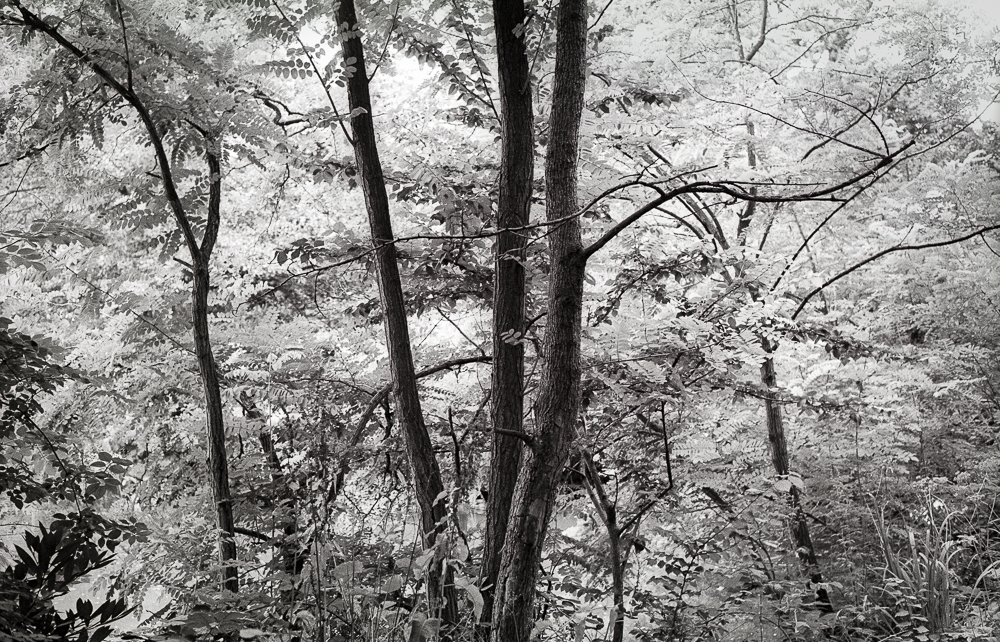A by-product of writing a blog is that it inevitably records the author's developing tastes and predilections. I seem to be very much in a black and white mindset at the moment, to the point, even, of giving a monochrome treatment to shots I originally saw in colour - like this one here.
There is a very old tradition in picture making of a landscape in which the viewer's eye is led towards a source of light. This has a pictorial effectiveness, the eye undertaking a 'journey' and finding satisfaction in so doing, and it also has an obvious metaphorical resonance. 'Out of the darkness, and into the light.' I write 'picture making', because it abounds in historical painting, and therefore long precedes photography.
I am close to this shot, having just processed it, and so am not yet decided as to how much I like it. It is significant because of its relationship with the above tradition, but as usual with these things, it is also something of a photographer's set piece, just as are windows, doors and so on. My main reason for including it is that I know I am happy with its tones.
I trimmed the image a little, before darkening the edges and tweaking the highlight tones. I worked towards a tonally full piece, one having a range of tones from black to near white. This image presents one of those very balanced and full-looking histograms that fills the graph as a neat and symmetrical, centred hill. I haven't yet printed it, but imagine that it will print very well and has plenty to occupy the eye, in textural detail as well as fulsome tone.



